Fertilizers with a high content of phosphorus. Phosphate fertilizers - "balm for the soul" for plants
Consider the main phosphate fertilizers. What are the types of phosphate fertilizers?
Fertilizers are substances that are used to improve soil properties, plant nutrition, and increase yields.
In order to grow, develop and bear fruit, all crops consume from the air and soil. nutrients. From the soil they take sulfur, iron, calcium, potassium, phosphorus, nitrogen. From the air - for breathing - oxygen, for photosynthesis - carbon dioxide. These are the main nutrients, and plants consume them to a large extent.
However, plants from the soil also consume other elements that they need in small quantities. These elements include: magnesium, molybdenum, manganese, zinc, boron, cobalt, copper and many others, which are called trace elements.
Despite the fact that the elements that plants feed on (calcium, potassium, phosphorus, nitrogen) are in the soil in large quantities, however, they are often in an inaccessible form for plants. It is necessary to create conditions that contribute to the fact that potential fertility turns into effective one, and, if necessary, use fast-acting factors - organic and mineral fertilizers.
One of the main conditions for regular and abundant fruiting of berry and fruit crops is the use of fertilizers.
Since plants primarily need potassium, phosphorus and nitrogen, the main mineral fertilizers contains these elements.
Mineral fertilizers are divided into complex and simple.
Simple fertilizers- these are those that include only 1 nutrient: potassium - only potassium, phosphorus - only phosphorus, nitrogen - only nitrogen.
Complex fertilizers contain 2 or 3 batteries at the same time. For example, nitrophoska fertilizer contains potassium, phosphorus and nitrogen; ammophos - phosphorus and nitrogen.
In fact, each fertilizer contains several chemical elements, some of which can even harm plants. All simple fertilizers (superphosphate, urea, ammonium nitrate) contain trace elements: potassium chloride and potassium salt contain sodium and chlorine; superphosphate contains fluorine, sulfates (ammonium, magnesium, potassium) contain sulfur.
In small quantities, they benefit plants, and in large doses they harm.
Phosphate fertilizers are fertilizers that contain phosphorus as the main nutrient.
Distinctive feature phosphorus fertilizers lies in the fact that phosphorus is not washed out by water from the soil, but is fixed in it. One of the main macronutrients remains in the soil and improves plant development.
The most common type of phosphate fertilizer is considered superphosphate Ca(H2PO4)2.
It is simple and rich. Simple superphosphate contains up to 20% phosphate. Soluble in water, but not as good as potassium and nitrogen fertilizers. The rate of application to the soil is 40-60 grams per square meter. Simple superphosphate exists in the form of powder and granules. The efficiency of granulated superphosphate is higher. It is more easily absorbed by plants.
Superphosphate enriched contains more phosphorus, up to 24%. Due to the higher phosphorus content, the application rate is lower.
Double superphosphate. The content is twice as high and is 42-50%. The application rate is two times less. This type of phosphate fertilizer is good to use when digging the ground in autumn or spring.
Phosphate flour. The phosphorus content reaches 30%. Mainly applied to acidic soils. This is due to the fact that phosphorus in this type of fertilizer is hard to digest by plants, and under the influence of acidic soil, digestibility increases.
Precipitate. CaHPO4 ×H2O The content of the active substance reaches 38%. A distinctive feature of the fertilizer is that it does not dissolve in water and releases phosphorus for a number of years. It is mainly used for autumn digging of the soil.
Thomasslag. Ca4P2O9 - tetracalcium phosphate or Ca4P2O9 × CaSiO3- silicocarnitite. The phosphorus content is 14%. This type of fertilizer is especially effective on acidic soils.
Thermophosphates. Phosphorus content up to 34%.
Defluorinated phosphates. The phosphorus content reaches 32%.
Phosphate fertilizers are used in the main method, for top dressing and sowing application.
The main raw materials for production are natural phosphates (phosphorites and apatites of various deposits).
AT agriculture Phosphate fertilizers are used to increase soil fertility, most often to increase the content of phosphorus and phosphorus compounds that are available to plants. In addition, bone meal, fluorine-free phosphate, and precipitate are used to feed animals with minerals.
In industry, superphosphate is used in the sugar and yeast industries. Used in construction for the purpose fire retardant coating tree.
Double superphosphate applied in chemical industry as a source of phosphorus and for the manufacture of fertilizer mixtures.
Almost all gardeners and gardeners use fertilizers. This is necessary in order to get the desired result when harvesting. Thanks to fertilizers, those nutrients that are necessary for the development and growth of plants accumulate in the earth. Phosphate fertilizers are the most common. It is the lack of these fertilizers in the soil that negatively affects the growth of the crop.
The advantages of such phosphate fertilizers is that their application in large quantities will not cause any harm to crops. It is assimilated by cultures in the quantity necessary for them. Plants that germinate in soil rich in phosphorus develop rapidly and produce excellent yields.
A professional gardener can determine at a glance which substance is lacking for a crop and what it needs. But for beginners, this is very difficult to determine the first time. Therefore, below we will give the main signs by which a novice gardener will be able to see what is in his soil for culture. little phosphorus and phosphorite:
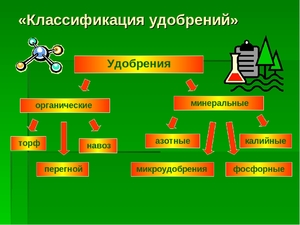
Timely application of phosphate fertilizers will help you avoid such problems. Their application and significance for cultures are so important that they cannot be neglected under any circumstances. It is recommended to cultivate the soil regularly with them. There is also another very important aspect. Before enriching the earth with them, it is necessary to figure out what exactly causes a lack of phosphorus in the soil . The most common are:
- Applied agrochemicals of the wrong composition;
- With intensive farming, that is, with an increased load on the soil, its microflora does not have time to recover;
- Cultivation is wrong;
- The germinating previous crop completely absorbed all the phosphorus savings, and subsequently they were simply not replenished;
- Fertilizers containing phosphorus were applied incorrectly.
organic
 For the soil, fertilizers can be obtained not only with the help of chemicals, but also from organic matter. For example, bone meal. It is no secret to anyone that there is a lot of phosphorus in the bones of livestock. You can get fertilizer from them by processing bones. The main advantage of this type of feeding is that there are no chemicals in it. Meal from the bones of livestock will help you grow a crop of large volumes, and most importantly, safe for health.
For the soil, fertilizers can be obtained not only with the help of chemicals, but also from organic matter. For example, bone meal. It is no secret to anyone that there is a lot of phosphorus in the bones of livestock. You can get fertilizer from them by processing bones. The main advantage of this type of feeding is that there are no chemicals in it. Meal from the bones of livestock will help you grow a crop of large volumes, and most importantly, safe for health.
Organic top dressing is used for potatoes, tomatoes and other horticultural crops. Often, such top dressing is used for all home crops, including indoor flowers. It is especially good for vines, ficus and palm trees. The dosage for flowers is best calculated on one pot. For 1 liter, 3 teaspoons of tea dressing are taken.
Ammonium hydrogen phosphate
A chemical sold in concentrated form - diammophos. This form of release allows you to save top dressing very well. The application of phosphorus fertilizers of this type enriches the earth huge amount useful trace elements and substances. Basically, they feed the land before sowing or planting seedlings or during them. This top dressing will help reduce the acidity in the soil, which will increase its yield.
Suitable very well for all garden crops. When planting potatoes, it is recommended to apply 1 teaspoon of top dressing directly into the hole. You can also use it when planting tomatoes and cucumbers. But remember that you need to feed crops with fertilizers that contain ammonium hydrophosphate before sowing or when these plants bloom. When you apply this top dressing during flowering, then dilute it in the proportions indicated on the package and pour it under the root. But if you use this type of top dressing before sowing, then mix it well with the ground.
Experienced gardeners very often use diammophos with organic species. But remember that bird droppings need to be insisted and diluted with a huge amount of water for a very long time so that the plant does not burn.
Ammophos
Reacting, ammophos produces a small amount of nitrogen. But phosphorus is released enough. This type is obtained by neutralizing orthophosphoric acid - during the process, ammonia is added, which takes part in the reaction. The fertilizer obtained in this process is very well absorbed by cultures.
Best of all, this top dressing is suitable for cucumbers. This is due to the fact that it has the correct ratio of fluorine, potassium and nitrogen. Its timely application will protect the culture from fear of temperature fluctuations. They do not contain chlorine and nitrates, which allows you to get environmentally friendly and safe products for life, as well as avoid allergies.
Ammophos application is best done in the spring before planting crops in the ground or during plowing in the fall. Dosages of application are as follows:
- fruit trees and berry bushes- by 1 square meter 20 - 35 grams;
- Ornamental plants and lawns - per 1 square meter 20 grams;
- Vegetable crops - 15 - 25 grams;
- Small varieties of flowers - per 1 square meter 5 - 10 grams, and for large ones - 15 - 30 grams, respectively.
Superphosphate
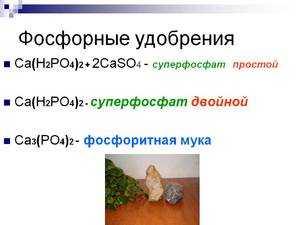 Superphosphate is called the type of phosphorus top dressing, which contains magnesium, phosphoric acid, sulfur, monocalcium phosphate and other useful substances. In the agricultural sector, they have found great application due to their good assimilation by crops. No matter what type of soil you have, this top dressing is suitable for absolutely all crops and plantings.
Superphosphate is called the type of phosphorus top dressing, which contains magnesium, phosphoric acid, sulfur, monocalcium phosphate and other useful substances. In the agricultural sector, they have found great application due to their good assimilation by crops. No matter what type of soil you have, this top dressing is suitable for absolutely all crops and plantings.
Superphosphate has a positive effect on the development and growth of crops, develops and strengthens their immunity to the maximum. After you treat the plant with superphosphate, even frost will not be afraid of it. It can be used individually and in combination with other types of top dressing. Thanks to him, the yield is significantly increased.
Such top dressing is intended for cereal crops, fruit varieties, tomato and other vegetables. For tomatoes, this environment is the most favorable. Not only are they growing rapidly, but the number of ovaries is also increasing significantly.
Feeding is done in two ways:
- When flowering - trunk circle pour in 0.5 liters;
- Before disembarkation - 15–20 grams are poured under 1 bush.
Liquid superphosphate is diluted in the following proportion: 100 grams of superphosphate is poured into 10 liters of warm water.
Double superphosphate
In this type of phosphorus-containing fertilizer, approximately 50% of phosphorus . Double superphosphate it is recommended to apply in the fall, when the earth is dug up. If there is a need to apply top dressing at planting or under the stem, then it is necessary to dilute the solution accordingly. Basically, the standard dosage is divided by half.
A large phosphorus concentration in the composition of the substance directly affects the price. But it's very easy to explain. A small amount of double superphosphate is enough to exclude the use of other types of fertilizers. The effect will be the same.
Double superphosphate is intended for shrubs and fruit and berry trees. The recommended proportions are:
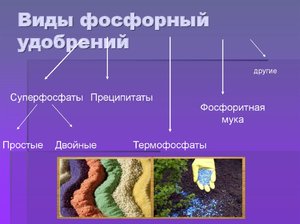
Due to the fact that some of the elements that make up the bait for plants are absorbed with difficulty, it is recommended apply such substances in the fall. After that, the earth needs to be dug up well. AT winter period a complex reaction occurs, during which the soil is enriched from above with nutrients that are able to create favorable conditions for the germination of crops.
Minerals can be added in spring and summer. But this must be done with extreme caution. This is due to the fact that with an excess of the substance, the roots can be burned. In order to prevent this outcome, dilute the concentrate in plenty of water.
For right choice fertilizers, you need to study the features and composition of the soil in this area well. Only after receiving this information, you can choose the right one for you. good harvest dosage.
In general, one can distinguish types of fertilizers that contain phosphorus:
- Mixtures are hardly soluble. These substances are mainly used for those soils where there is a large amount of alkali or they are completely depleted. These zones include areas of the northern chernozem. It is recommended to fertilize the soil with such species only in the fall;
- Mixtures are water soluble. It is a unique option. Suitable for absolutely all soils and crops. Can be applied in a variety of ways;
- Citrate- and lemon-soluble phosphorus-containing fertilizers. They are used on those types of sites where the level of acidity is increased.
water soluble
These substances strengthen the root system well and dissolve in water. These can be attributed the following types:
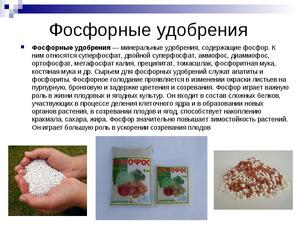
Lemon and citrate soluble
It is used before sowing to enrich the soil. Such substances are best used for those soils where acidity is increased. These drugs do not dissolve in water. Can be applied for different cultures. These supplements include:
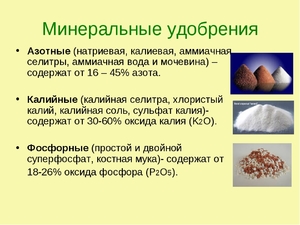
sparingly soluble
These substances interact well with sulfuric and nitric acid, but with weak ones they do not react and do not dissolve in water. These include phosphorite flour and vivianite (made from marsh ore).
Mixed types include substances that contain several important elements: nitrogen-phosphorus-potassium and phosphorus-potassium.
Attention, only TODAY!
Phosphorus is necessary for a person in food all the time, and vegetable food is one of the best forms for this. The need for phosphorus for a person is up to 1.2 g per day. It is a part of proteins, vitamins, acids, bone tissue, takes part in the energy processes of the body. Phosphorus is associated with muscular and mental activity. With an optimal ratio, it should be 1.5 times higher than calcium in a person. But with an excess of phosphorus, calcium is removed from the bones.
In plants, phosphorus accelerates development, creates buffering of cell sap, maintains turgor (fullness) of cells, participates in the movement of products formed in leaves, improves product quality, and participates in the transfer of hereditary properties.
From phosphorus fertilizers, the roots of plants branch more strongly and penetrate deeper into the soil, thereby the plant makes better use of moisture and nutrients. Phosphorus increases the cold and winter hardiness of perennial vegetables, promotes the use of nitrogen. With its increase in the environment in vegetables, the amount of protein nitrogen increases and nitrates decrease. With the combined action of phosphorus with potassium, plants become more resistant to lodging from wind, precipitation and irrigation.
In all growing conditions, plants must be provided with phosphorus in initial period life. Its presence during seed germination accelerates the emergence of seedlings and the subsequent development of seedlings and seedlings, makes plants stronger.
The lack of phosphorus leads to a slowdown in the formation of carbohydrates and causes nitrogen starvation. The growth of shoots and leaves of crops slows down. Young leaves become dark green, while old leaves become gray-green, wrinkled with sharp edges.
With a lack of phosphorus in potatoes the quality of tubers is deteriorating, in their pulp appear brown spots that harden when cooked. Cabbage grows slowly, purple color appears on the bottom of the old leaves along the veins.
At the tomato the fruits shrink, and their growth slows down. Legumes become dwarf, their stems turn red, flowering and fruiting are delayed. In all cultures, with a lack of phosphorus, the process of protein formation is suspended, which, with phosphorus starvation, leads to their decay.
Excessive phosphorus content in the soil appears on the leaf blades between the veins as whitish necrotic spots. This results in a lack of trace elements and calcium in plants, because sparingly soluble compounds of these elements are formed. The growing season of crops is reduced. Sheet
when oversaturated with phosphorus, it can fade. The increase in phosphorus in the leaves of various vegetables (tomato, carrot) is associated with acidification of the environment. During alkalization, the process goes to reverse side. In flowers and seeds, phosphorus usually accumulates less than in other organs.
Phosphorus in the soil is replenished by organic and mineral fertilizers. More often than others of the mineral, double granular superphosphate is currently used. For greenhouses, it is best to give it, pricipitate and defluorinated phosphate. Small doses of phosphorus contain fish and horn meal. The organic form of phosphorus is found mainly in humus. The decomposition of humus under the action of microorganisms leads to the release of phosphorus and the formation of its easily accessible forms. With soil acidity in the range of 5.8-6.2, most of the phosphorus compounds in soils are in a form accessible to plants.
Soluble phosphorus fertilizers that are in the soil for a long time and are not absorbed by plants begin to age and turn into less soluble ones, while for sparingly soluble ones, the opposite occurs. Phosphorus content decreases with soil depth. For better provision of plants with them, layer-by-layer introduction into the soil is desirable. Superphosphate from the place of its application moves in the soil no further than 5-8 cm.
In order to economically use mineral phosphate fertilizers, they are recommended to be applied to furrows, rows, holes. The benefit from this is 2-3 times higher than from continuous application. The latter is better for greenhouses.
For crops open ground phosphorus is most effective with the main introduction of a full dose for the season. In greenhouses, in addition to the main application, root and foliar top dressings are also used during the fruiting period (dose 2 g / l). Depending on the greenhouse soils, the introduced phosphorus during the growing season is used by 10-30%. From ash, it is absorbed better than from superphosphate. In the plants themselves, the element can be reused.
The absorption of phosphorus by plants depends on the temperature factor. With a decrease in soil temperature, the absorption of phosphorus by vegetables decreases. They begin to suffer from its lack at 10-12 ° C. Phosphorus can be taken up by roots low temperatures, but will not move to the aerial organs and be digested to the normal temperature level for each of the cultures. If the air temperature is higher than the soil temperature, then phosphorus is better absorbed by plants with foliar top dressing.
With the harvest, different vegetables take out phosphorus differently. Tomato requires 0.8, cucumber - 0.7, cabbage - 0.9, carrots - 1.0, potatoes 1.3 g per 1 kg of products. The applied chloride fertilizers reduce phosphorus in vegetables.
In plants during normal life, an intensive exchange of phosphorus compounds between the roots and above-ground parts must constantly occur. Otherwise, a stop and other disturbances in growth are inevitable. Based on this, maintaining constant low concentrations of phosphate fertilizers in the soil is the best condition their use.
All plants need small amounts of phosphorus constantly, as well as other nutrients, and the ratio between them changes repeatedly during the growing season. So, tomatoes need the ratio of nitrogen, phosphorus and potassium: before budding - 2:2:1, before fruiting - 2:1.5:1.8; cucumbers need: before budding - 2:1:1; before fruiting - 1:2:2; during the fruiting period -1.5:1.8:2.0; lettuce, these ratios for the entire growing season are -2: 1: 1.
In carrots, phosphorus uptake increases with the formation of roots; in potatoes - during tuberization; eggplant needs it more from planting to budding; zucchini and squash - from the moment of seed germination; tomato during mass flowering and fruit set; lettuce - in the formation of a head of cabbage; horseradish and katran - in the second half of the growing season. Phosphorus top dressing (together with potash) is also carried out to stop too strong development of tops, where this is not beneficial to the crop. Phosphorus affects the quality of products: it increases sugar and vitamin C in fruits, increases the starch content of potatoes, and reduces nitrates.
A solution of superphosphate (10 g / l) mixed with potassium chloride (5 g / l) is used on cabbage at the time of egg laying by the white butterfly. The same is repeated two weeks later against cabbage cutworms and aphids.
One gram of phosphorus is contained in 12-16 g of simple superphosphate and 4.6-5 g of double, 4.3 g of diammophos, 3.7 g of ammophos. Average rates of phosphate fertilizers: for cabbage, carrots, legumes - 15-22 g / m²; for onions, beets, cauliflower -11-15 g/m².
Useful for human body phosphorus salts are found in peas, beans, beets, carrots, spinach, lettuce, sorrel, onions, potatoes, pumpkin, cabbage, cucumber, tomato, pepper, eggplant.
In relation to nitrogen, phosphorus in the plant contains 23.5%.
E. Feofilov, Honored Agronomist of Russia
Newspaper "GARDENER" 2001
Each experienced gardener and the gardener knows about the need to feed all cultivated crops. It is being held various methods, at different stages of growth. If most summer residents are familiar with manure and compost, then not everyone knows how to properly apply phosphorus fertilizers, and what types of them exist.
1 Say a word about superphosphate - balanced top dressing
Superphosphate fertilizers are among. The phosphorus content in them reaches 26%, the nitrogen content - up to 6%. In addition, they contain a number of auxiliary elements (sulfur, calcium, magnesium and potassium), the assimilation of which on the plant has the most favorable effect, expressed in accelerating growth and faster ripening of fruits.
A complete classification of phosphate fertilizers is a broad topic. In short, the main types of fertilizers containing phosphorus include:
- Ordinary superphosphate (white powder).
- Granular phosphate (small balls-granules).

The first type is moderately effective due to the content of gypsum additives that do not dissolve even in hot water. Powdered gypsum is needed only so that during storage the fertilizer does not cake and does not turn into a "stone". Top dressing in the form of balls-granules in its composition contains up to 30% of sulfonated calcium. Superphosphate is also produced, consisting of a smaller volume of insoluble gypsum and a larger volume of phosphorus - up to 50%. It is also called double.
2 The effect of feeding - why do plants need chemistry?
What gives the use of phosphorus and phosphorus-containing fertilizers? The main positive effect of their use is to accelerate the active growth of crops and seedlings and approach the fruiting phase. It has also been proven that phosphorus top dressing significantly improves the taste of grown fruits and berries.
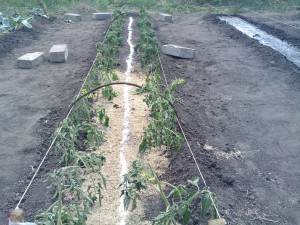
In the soil, phosphorus is in a non-free form, and as one of the components different kind mineral compounds, therefore it is very poorly absorbed by the root system.
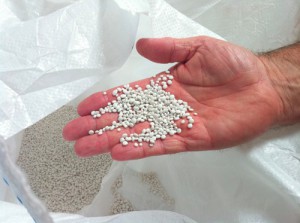
In turn, industrial formulations contain it in a free form, due to which it is quickly formed and developed. root system therefore, yields are increased, oxidative processes are minimized, and fruits and vegetables are stored much longer. Ready-made granules or powder can always be purchased at any specialized store or market. Phosphorus fertilizer for flowers does not differ in composition, but is available in convenient packaging from 0.5 to 3 kg.
3 How to apply phosphate fertilizers correctly?
This type of fertilizer is recommended for all types of soil, but it works best on soils of neutral acidity and with a high alkali content. Superphosphate should be used with caution on acidic soils, since after the interaction of acids and phosphorus, trace elements are formed that plants do not absorb. Additives of humus or limestone somewhat neutralize this effect, allowing plants to absorb a small amount of nutrients.

Usually, the time for applying superphosphates falls in early spring or autumn after harvest (during the period of sowing and digging, respectively). When cultivating potatoes, beets, tomatoes and cucumbers - a traditional set of any summer resident, to increase productivity, top dressing is applied when planting or planting seedlings directly into the holes.
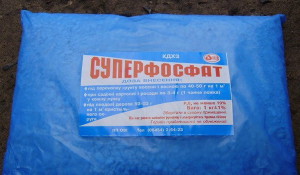
- when feeding fruit trees – 40–60;
- when feeding vegetables - 15–20;
- in the hole (when planting seedlings or planting potatoes) - 3;
- with seasonal digging of the soil - 40–50.

